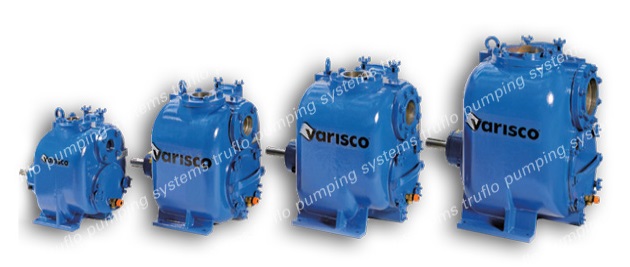Wet Self Primers
Introdusing Varisco

VARISCO has a clear mission: production and sale of pumps for the use in industry, construction, mining and emergency applications.
VARISCO started in 1932 as an individual enterprise, and pump production commenced in 1948. What was a family name is now a household word, known around the world for high quality, rugged and dependable pump design and construction.
The success of the VARISCO products in a highly competitive market comes from teamwork with the sales network and clients around the world, innovation, interpreting and anticipating the needs of the market, service, guiding end users in the choice, installation and operation of the pumps.
VARISCO has now been distributed in Australia providing reliable, trouble free and efficient pumping solutions for many years.
VARISCO Quality
Quality certification used to be a goal, now it is a compulsory starting point. When VARISCO achieved ISO 9001, the procedures were already drawn up with a view to implementing processes when the time came to upgrade to vision 2000. Thus the current certification was achieved in 2003 without difficulty.

VARISCO Innovation Centre
Even in a mature field such as pumps, there is a continual need for innovation in the design and materials used in order to meet ever more stringent standards for safety at the workplace and protection of the environment.
VARISCO have invested in a purpose built Innovation Centre alongside the factory, dedicating considerable resources to keep at the forefront of pumping technology. At the heart of the Innovation Centre is a laboratory for testing pumps, this is divided into two areas: water for roto-dynamic pumps and oil for positive displacement pumps. The “water area includes three fully automatic stations equipped with DC motors for exact speed control, and a unique >10m vertical test facility for priming and NPSH testing of pumps from 1” to 12”.
The oil area can accommodate positive displacement pumps from 1” to 10”.
The oil is contained in four tanks with a cooling system to ensure that the viscosity remains constant during the test.
The viscosity range is from 50-500 cSt. A sophisticated data acquisition system collects all the test results and makes them immediately available for detailed analysis.
The Innovation Centre staff also supervise field testing of pumps with new materials or features in collaboration with selected key areas.
When ideas prove their worth in the real world, they are made available to all VARISCO customers.

What is a self-priming pump?
A self priming pump is a pump that will free itself of air when it becomes air-bound, and will resume pumping without attention. The key point here is air – though this applies to any vapour.
How self-priming pumps work?
Self-priming pumps work to transfer vapour from the suction side of the impeller to the discharge. When this is done continuously, a vacuum is created in the suction line and atmospheric pressure on the surface of the liquid supply pushes the liquid into the pump. Recirculation priming is typically used by designers to achieve the vapour transfer.
Recirculation priming
This method uses a check valve between the suction passageway and a liquid reservoir on the pump discharge. When air is in the suction passageway, the check valve opens and liquid from the reservoir recirculates back through the impeller, taking a few air bubbles along on each trip. This soon exhausts the air in the suction line, which fills with liquid and closes the check valve.
Self-priming pump tips
• Self-priming pumps require an initial fill of liquid – they need something to recirculate.
• Prevent excessive back pressure on the discharge of the pump. Typically more than 10 or 15 psi of discharge back pressure gives the air from the suction no place to go. You can eliminate this problem by placing an air release valve in your discharge line between the pump and the check valve. This lets the air escape.
• Buy self-priming pumps with a mechanical shaft seal. Air leaking in through the stuffing box makes the priming difficult. Most self-priming pump manufacturers offer a grease lubricated, double type mechanical seal made specifically for contractor use -- If a road contractor can’t ruin them, they must be good!
• Many self-priming pumps have a check valve just inside the suction flange. Its main purpose is to prevent a back siphon effect from emptying all of the liquid out of the pump when it’s shut down.
• There’s a limit to how far you can lift a liquid, even with a perfect vacuum. Consult the pump’s NPSH curve when you put the pump on a suction lift.
• Air leaks in the suction line will reduce or eliminate the pumps self-priming capability. In addition, the more air in the suction line, the slower the pump primes. Know that a non-reinforced suction line will collapse.

Source: http://www.truflopumps.com.au/products/mining/wet-self-primers.html
